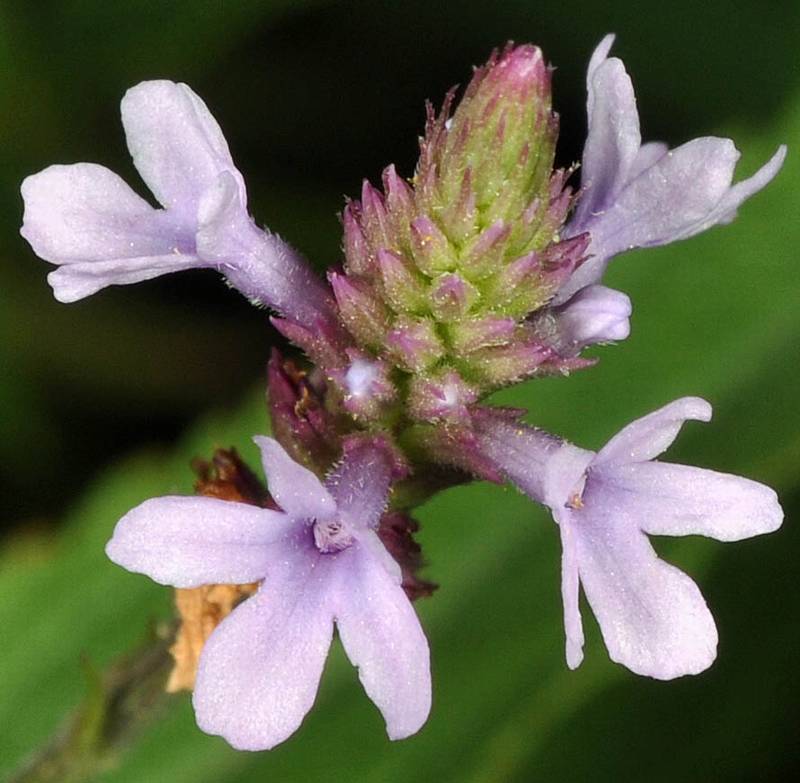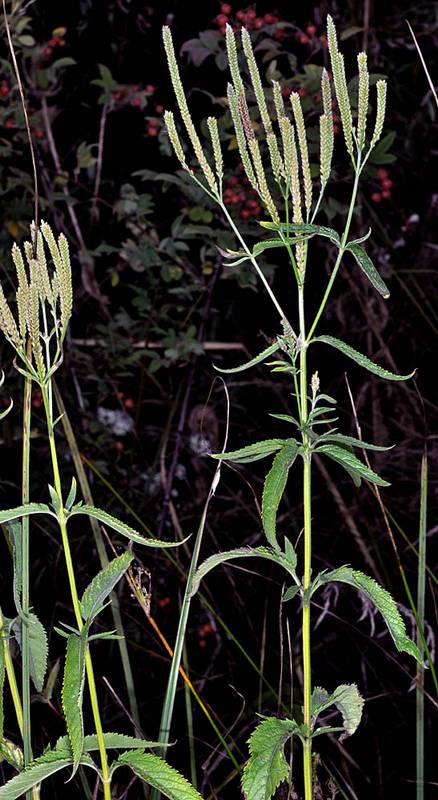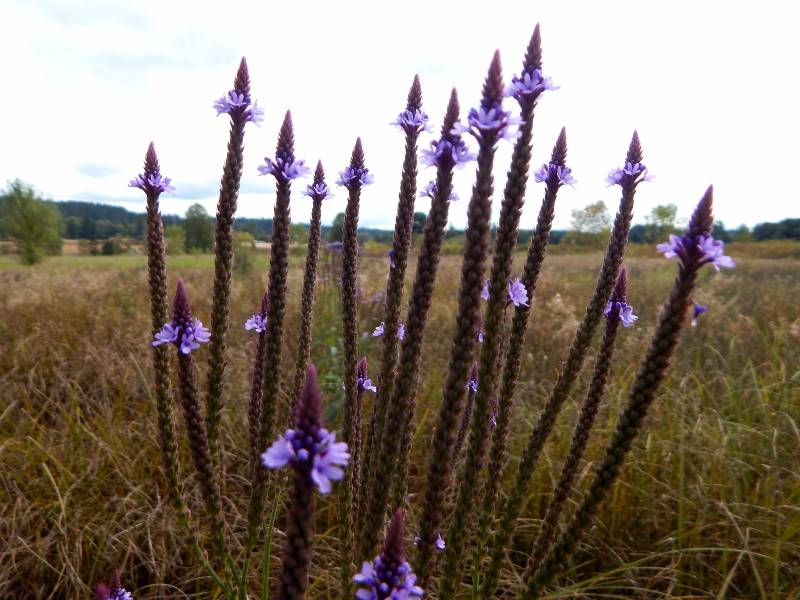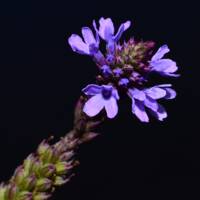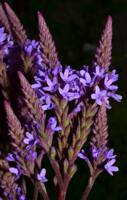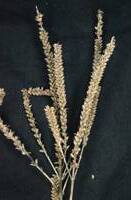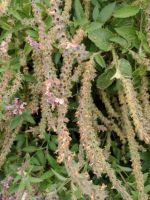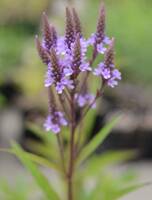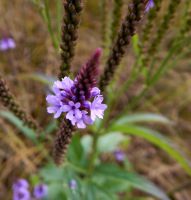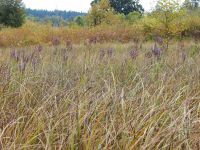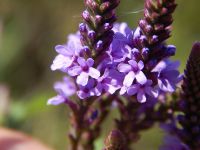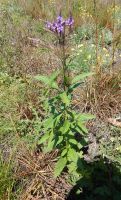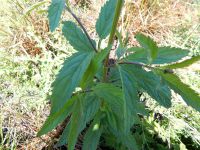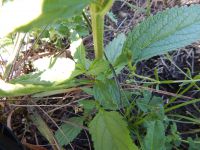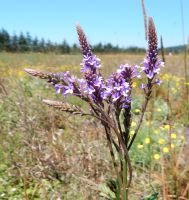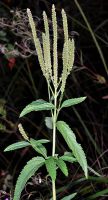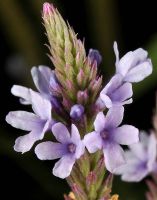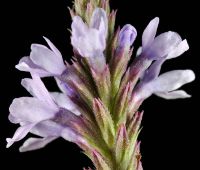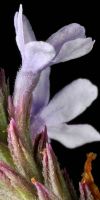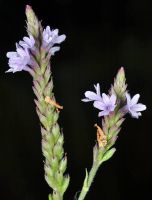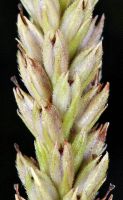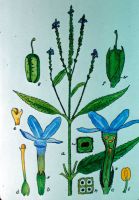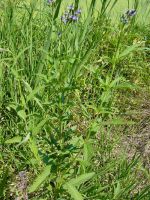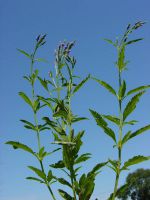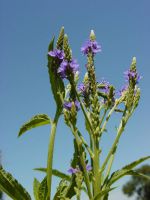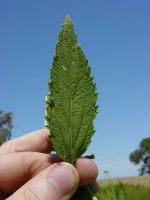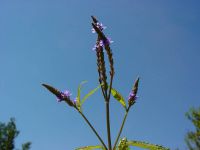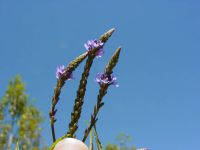Distribution: Occurring chiefly east of the Cascades crest in Washington; British Columbia to California, east across North America to the Atlantic Coast.
Habitat: Marshes, wetlands, streamsides, and other riparian areas.
Flowers: July-September
Origin: Native
Growth Duration: Biennial, Perennial
Conservation Status: Not of concern
Pollination: Bumblebees, bees, butterflies, flies
Fibrous-rooted perennial from a short crown, erect, usually with a square, single stem 5-15 dm. tall.
Leaves opposite, with petioles 1-2 cm. long; leaf blades lanceolate or lance-ovate, acute, scabrous, 4-15 cm. long and 1-4 cm. wide, sharply serrate, occasionally shallowly lobed.
Inflorescence of spikes 3-10 cm. long, in a panicle at the top of the stem, often forming a flat-topped cluster, the stem simple below; bracts inconspicuous, awl-shaped, 2-2.5 mm. long; calyx 5-angled and unequally 5-toothed, 2.5-3 mm. long; corolla blue or violet, the tube 3-4 mm. long, the flaring limb 2.5-5 mm. wide; stamens 4; style slender, 2-cleft, only one lobe stigmatic; ovary superior, with 2 carpels, each carpel partitioned into 2 cells.
Fruit dry, separating into 4 nutlets.
Publication: Sp. Pl. 1: 20. 1753.
PNW Herbaria: Specimen records of Verbena hastata in the Consortium of Pacific Northwest Herbaria database
WA Flora Checklist: Verbena hastata checklist entry
OregonFlora: Verbena hastata information
E-Flora BC: Verbena hastata atlas page
CalPhotos: Verbena hastata photos

